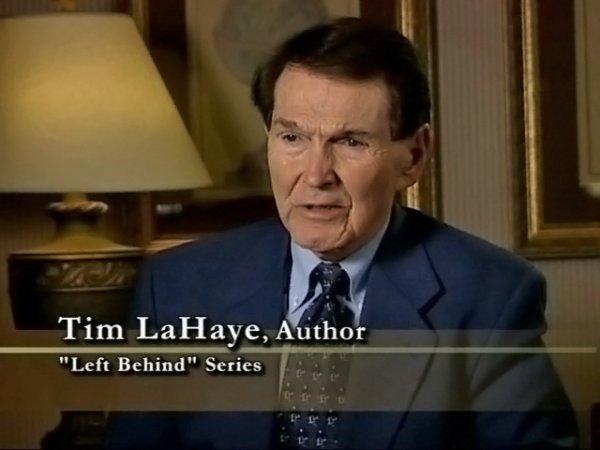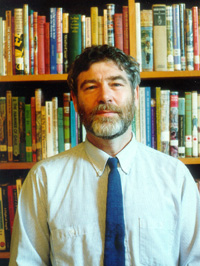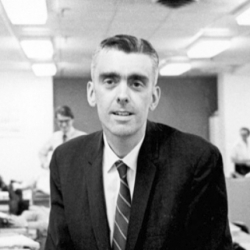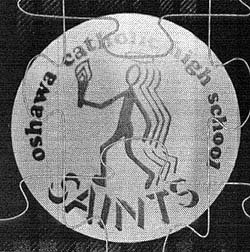



Sometimes it’s a “special feature” embedded deep on the DVD off the “main menu” that is the real nugget. After not finding enough bandwidth to watch a Netflix offering, I dug deep into my DVD collection last night to pull out the first Left Behind movie by North Bay, Ontario brothers Peter and Paul Lalonde, filmed in 2000, and which made its theatrical premiere on Jan. 26, 2001 at a star-studded red carpet event at the Directors Guild of America (DGA) theatre on Sunset Boulevard in West Hollywood. The DVD special feature, “Seeing is Believing,” has interviews with some of those on hand for that theatrical premiere, including the redoubtable Tom Selleck.
At the time almost 16 years ago, Left Behind: The Movie was the biggest and most ambitious Christian genre movie ever made, and it was hoped by many in the evangelical community to be the big crossover movie that would appeal also to the general public – read the “unsaved” or “non-believers,” as well as those already preaching in the choir. Left Behind: The Movie was an unusual release because it went to video first in October 2000, then theatres in January 2001. It opened in 800 theatres and grossed $4.2 million. It won “Bestselling Title of the Year from an Independent Studio” and “Sell-through Title of the Year by an Independent Studio” from the Video Software Dealer’s Association.
Alas, Left Behind has never quite realized that early promise and the franchise has been beset by problems of various kinds over the last decade.
For the uninitiated, Left Behind started out as a a series of 16 best-selling novels by Americans Tim LaHaye and Jerry B. Jenkins, published between 1995 and 2007, dealing with the Protestant evangelical Christian predispensationalist End Times view of the Rapture and the Tribulation that follows. The drama comes from the struggle of the rag-tag Tribulation Force against the Global Community and its leader Nicolae Carpathia – the Antichrist.
LaHaye, now 89, is a sometimes controversial evangelical minister, who conceived the Left Behind books, although Jerry B. Jenkins, 66, a sports-oriented biographical writer, did the actual writing of the books from LaHaye’s notes.
LaHaye was inspired to write the books in part by the late Iowa filmmaker Russ Doughten’s movies, such as his 1972 film, A Thief in the Night, followed by its three sequels – A Distant Thunder in 1978, Image of the Beast in 1980 and The Prodigal Planet in 1983. Doughten, who earned his master’s degree from Yale Drama School in 1954, died at the age of 86 in August 2013.
Jenkins, on the other hand, has said, “I write the best I can. I know I’m never going to be revered as some classic writer. I don’t claim to be C. S. Lewis. The literary-type writers, I admire them. I wish I was smart enough to write a book that’s hard to read, you know?” Having read all 16 books in the series – from Left Behind: A Novel of the Earth’s Last Days, published in 1995, and then Tribulation Force: The Continuing Drama of Those Left Behind; Nicolae: The Rise of Antichrist; Soul Harvest: The World Takes Sides; Apollyon: The Destroyer Is Unleashed; Assassins: Assignment: Jerusalem, Target: Antichrist; The Indwelling: The Beast Takes Possession; The Mark: The Beast Rules the World; Desecration: Antichrist Takes the Throne; The Remnant: On the Brink of Armageddon; Armageddon: The Cosmic Battle of the Ages; Glorious Appearing: The End of Days; The Rising: Antichrist is Born: Before They Were Left Behind; The Regime: Evil Advances: Before They Were Left Behind; The Rapture: In the Twinkling of an Eye: Countdown to Earth’s Last Days, right through to Kingdom Come: The Final Victory in 2007, I can only say, “true that Jerry.”
In the Protestant premillennial dispensationalist interpretation of Bible prophecy, which posits a pretribulation secret Rapture – there is a belief that Christians will be taken up from earth in a sudden, silent removal of true believers by God prior to a time of tribulation and the Second Coming. For this belief, pre-tribbers rely heavily on Saint Paul and 1 Thessalonians: “For the Lord himself will descend from heaven with a cry of command, with the archangel’s call, and with the sound of the trumpet of God. And the dead in Christ will rise first; then we who are alive, who are left, shall be caught up together with them in the clouds to meet the Lord in the air; and so we shall always be with the Lord.”
That is very much an evangelical Protestant rather than Catholic reading of 1 Thessalonians, as the passage describes a very loud and public event, not a secret Rapture. Catholics do, however, believe in a future Antichrist, and a coming trial and time of apostasy before the Second Coming.
While some of the Apostolic Fathers of the early church, including Papias, Justin Martyr, Irenaeus, Tertullian, Hippolytus, Methodius, Commodianus and Lactanitus – were premillennialists who believed that Christ’s Second Coming would lead to a visible, earthly reign – the pretribulational Rapture espoused by the Protestant premillennial dispensationalist end times writers is premised on the notion that Christ sought to establish a material and earthly kingdom, but the Jews rejected him, so the Church by necessity is a parenthetical insert into history, created as a result of Jews rejecting Christ, resulting in the existence of two people of God: the Jews, the “earthly” people, and the Christians, the “heavenly” people.
The premillennial dispensationalism on display in recent years is of a much more recent vintage and is for the most part the creation of John Nelson Darby, an Anglo-Irish curate with of the Anglican Church of Ireland, who would eventually leave that church and in the early 1830s with a small group of men form what would come to be known as the Plymouth Brethren. It was Darby who postulated the secret Rapture and much of what premillennial dispensationalism today teaches about 190 years ago.
The Left Behind movie franchise, which is now up to four movies with a fifth possible, is perhaps surprisingly, a Canadian phenomenon, spearheaded by two brothers from North Bay Ontario, Peter and Paul Lalonde, who first came to wide notice on television in 1989 with their weekly half-hour show This Week in Bible Prophecy, before going onto form Cloud Ten Pictures in St. Catharines, Ontario in 1995. Paul Lalonde worked as social worker at various group homes in North Bay before attaining his televised pulpit, while Peter Lalonde was a good enough goalie he might had a shot at playing NHL hockey had he wanted to.
Peter Lalonde has said he became a “Christian as a result of seeing The Prodigal in 1983 in a church. I went back on Sunday, then again, and several weeks later I became a believer.”
Left Behind: The Movie was quickly followed by Left Behind II: Tribulation Force in 2002 and Left Behind: World at War in 2005, all starring Kirk Cameron, 45, still perhaps best known to the larger public as a teenage actor for his role as Mike Seaver on the ABC sitcom Growing Pains between 1985 and 1992, and Brad Johnson, Gordon Currie, Janaya Stephens, and Cameron’s real-life wife, Chelsea Noble.
But none of them would be back by the time the fourth movie, simply called Left Behind, was finally released nine years later in October 2014.
The most recent Left Behind movie was produced by Paul Lalonde and Stoney Lake Entertainment, a company he formed in 2012, and released through Cloud Ten Pictures, with Nicolas Cage starring as Rayford Steele, Johnson’s former role as an airline pilot, with Civil Twilight’s song “Letters from the Sky” being used in the trailer and movie.
The choice of Cage caused some quiet murmurs in certain evangelical circles, although not particularly loud ones for the most part, as Cage, a bankable box office star, is rumored to be Roman Catholic.
Why the long delay? Some nasty litigation is one explanation. LaHaye, who had sold the film rights for Left Behind to Joe Goodman, Bobby Neutz and Ralph Winter, owners of Namesake Entertainment in April 1997, before the End Times novels became a publishing phenomenon, hated the film. Namesake Entertainment had sold the rights to make the film to Cloud Ten Pictures in 1999. Left Behind: The Movie was privately financed and cost $17.4 million to make, including production, post-production, publicity, marketing, and distribution costs.Its theological consultants included John Hagee, author of Four Blood Moons: Something is About to Change, published in October 2013, from Cornerstone Church in San Antonio, Texas, and Michigan televangelist Jack Van Impe.
Widely known as “The Walking Bible” for spending about 35,000 hours in memorizing 14,000 Bible verses, Van Impe, who at 84 is a bit of a youngster compared to 97-year-old Billy Graham, where Van Impe got his start at the age of 17 playing the accordion before he started preaching, was hospitalized in early April with serious cardiac problems, missing taping almost six months worth of half hour episodes for his long-running TV show Jack Van Impe Presents, an eschatological commentary on the news of the week, which he normally co-hosts with his wife, Rexella Van Impe, while a number of guest co-hosts stepped in during his long convalescence in hospital and at a Michinga nursing home before his return to the airwaves in early October. The Van Impes have been married since 1954.
Sharp-eyed observers in Left Behind: The Movie could get a quick glimpse of Jack Van Impe as one of the passengers caught up in the Rapture mid-transatlantic flight. The Lalondes and Cloud Ten Pictures discovered early on theological consultants, musicians and all kinds of normally behind-the-scenes folk, like most everyone, enjoy the chance to have their 15 seconds of fame on the silver screen, too, which is also good for holding the line on production costs from the filmmakers’ perspective.
LaHaye, however, was not so easily charmed. He sued both Namesake Entertainment and Cloud Ten Pictures in July 1999, claiming the the producers told him that the movie’s production budget would exceed $40 million, although there was no language in the contract to that effect. LaHaye also claimed that he had sold the film rights on the condition that the picture be produced by a major studio with big-name Hollywood box office stars, and released to theaters in late 1999 so as to capitalize on the Y2K phenomenon.
LaHaye’s lawsuit was thrown out of U.S. federal district court in 2003, but by that point Cloud Ten Pictures and Namesake Entertainment had filed a countersuit against LaHaye for breach of contract, among other allegations.
Ultimately, in August 2008, the two sides settled their legal differences out of court, and LaHaye reportedly liked a rough cut he saw of the new Left Behind movie.
Unfortunately for Cloud Ten Pictures, Paul Lalonde and Stoney Lake Entertainment, LaHaye, if he did in fact like the finished final cut as well, was pretty much alone in that opinion. To say the film was savaged by critics in both the serious religious and secular press would be a charitable understatement. Two examples, one from the religious press, one from the secular, pretty much illustrate the debacle
Jackson Cuidon, writing in Christianity Today, said, “[t]he Left Behind movie is just a disaster flick injected with the slightest, most infinitesimal amount of Christianity possible. This is, in one way, good – no one needs to be upset, or get angry, or be offended, or question their beliefs, or the beliefs of those around them, or anything, because the film takes no stance on anything. The film is so inept, confused, and involuted that there’s no danger of even accidentally cobbling together something that could necessitate a defense of Christianity.”
That was the mild criticism. Andrew Barker (no relation), senior features writer for Variety, penned this piece published Oct. 2, 2014, the day before the film opened in theaters: “In what was surely a first in the annals of motion-picture marketing, an early ad for Left Behind featured a quote taken not from a film critic, but rather from Satan himself, who allegedly quipped, ‘Please do not bring unbelievers to this movie,’” Barker wrote.
“This presents a rare scenario in which Christian moviegoers ought to feel perfectly secure heeding the advice of the Devil, as this faith-based thriller is likely to inspire far more dorm-room drinking games than religious conversions. With a Sharknado-inspired visual style and a deeply weary lead performance from Nicolas Cage, Left Behind is cheap-looking, overwrought kitsch of the most unintentionally hilarious order, its eschatological bent representing its only real shot at box office redemption.”
OK, for the record, eh. I’m a big fan of the Sharknado franchise, too, so find your analogical comparisons elsewhere, and for God’s sake, if no other, lighten up namesake Barker! Cheesy is OK. Popular culture is made up of a rich cornucopia of cheesy television and movies that almost require a mandatory bowl of Cheetos® to consume such classics.
I haven’t seen the most recent Left Behind movie yet (although I have seen the first three). Will I? Quite probably should the opportunity present itself. Why? I’ve been a writer long enough to know critics like to hear the sound of their own voices above all else and if purple prose and hyperbole serve the day’s writing purpose, so be it. Most film critics are about as qualified to write about religion and especially eschatology as I am to perform neurosurgery.
Besides I have something of a soft spot admittedly for the Lalonde brothers, the boys from North Bay. Way back in 1993 and 1994, when I was a first-year graduate student in 2oth century American history at Queen’s University in Kingston, Ontario, and was contemplating what thesis topic I might pursue for my master’s degree, one of my possibilities under consideration was premillennial dispensationalism and the Rapture, which made watching This Week in Bible Prophecy something of a guilty pleasure. But in fairness, much of what I first learned about the “cashless” society and biometrics, including palm geometry and retinal scanning, all of which came true in the years that followed, so much so they’re almost commonplaces today, I first learned more than 20 years ago watching Peter and Paul Lalonde.
You can also follow me on Twitter at: https://twitter.com/jwbarker22





























